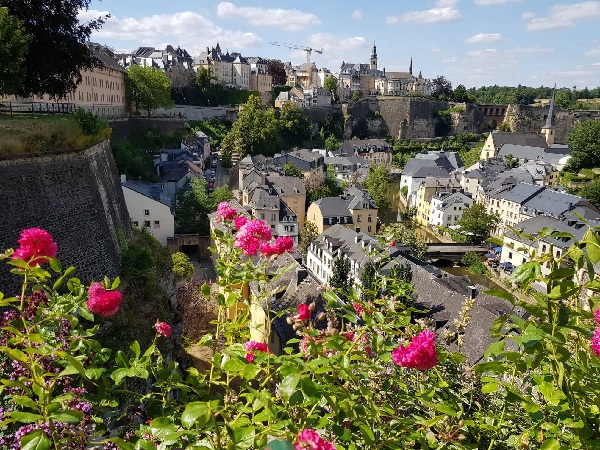 "Rondelles" rose garden in Luxembourg City, July 2019;
Credit: Jazmin Campbell/Chronicle.lu
"Rondelles" rose garden in Luxembourg City, July 2019;
Credit: Jazmin Campbell/Chronicle.lu
Known today mainly for its financial sector, Luxembourg’s economy has undergone significant changes over the years, going from an agriculture- and crafts-dominated economy to an industrial hub and a leading steel producer in the 19th and 20th centuries.
This series of articles looks at the industrial heritage of Luxembourg, from the steel industry and slate quarrying (and other forms of mining) to the textile industry and rose growing.
Next up is the rose growing industry.
Luxembourg was once hailed as the “Land of Roses”. In the early 20th century, roses grown in and around Luxembourg City were exported worldwide. Two young gardeners, Jean Soupert and Pierre Notting, set up their nursery in Limpertsberg back in 1855. Their creations won international prizes and business began to take off, attracting other rose breeders to the district. By the early 1900s, Luxembourg had become a hub for rose breeding, cultivating more than 260 new rose varieties and exporting up to ten million plants per year.
The industry declined during the First World War, particularly due to the blockade imposed by the Allies on Germany (and other members of the German Customs Union, or Zollverein). A combination of post-war economic recession, the phylloxera crisis and the Second World War spelled the end for this golden age of rose production in Luxembourg.
However, the industry has witnessed a revival since the 1980s, thanks to the efforts of non-profit organisations such as Lëtzebuerger Rousefrënn (which developed the rose garden at Château de Munsbach in 2017) and Patrimoine Roses pour le Luxembourg (which offers training sessions, rose garden tours, etc.). Such associations help keep this heritage and know-how alive today. In addition, the Roses of Limpertsberg - RosaLi Circular Walk allows visitors to explore this tradition, with stops at Notre-Dame Cemetery, the former Maison Soupert (where Soupert and Notting worked and lived for several years) and various streets named after rose growers and roses, to name a few.
Spring 2023 saw the inauguration of the newly landscaped rose garden, Parc Amélie, in Luxembourg City, and a new rose - Amalia Rose - was baptised for the occasion. Patrimoine Roses pour le Luxembourg continues to name rose varieties after members of the Grand Ducal family. Back in 1891, Soupert and Notting dedicated four new rose creations to the family of the first Grand Duke of the Nassau-Weilburg dynasty: Grand Duke Adolphe of Luxembourg. More recently, roses were christened in honour of Prince Charles and Prince François of Luxembourg.
Beyond Luxembourg City and Munsbach, visitors can admire rose gardens in Helmsange (Walferdange), which also features sculptures by Luxembourgish artist Jean Bichel, as well as in Walferdange, Mersch, Parc Gaalgebierg (Esch-sur-Alzette) and at Mondorf Domaine Thermal, among others.








